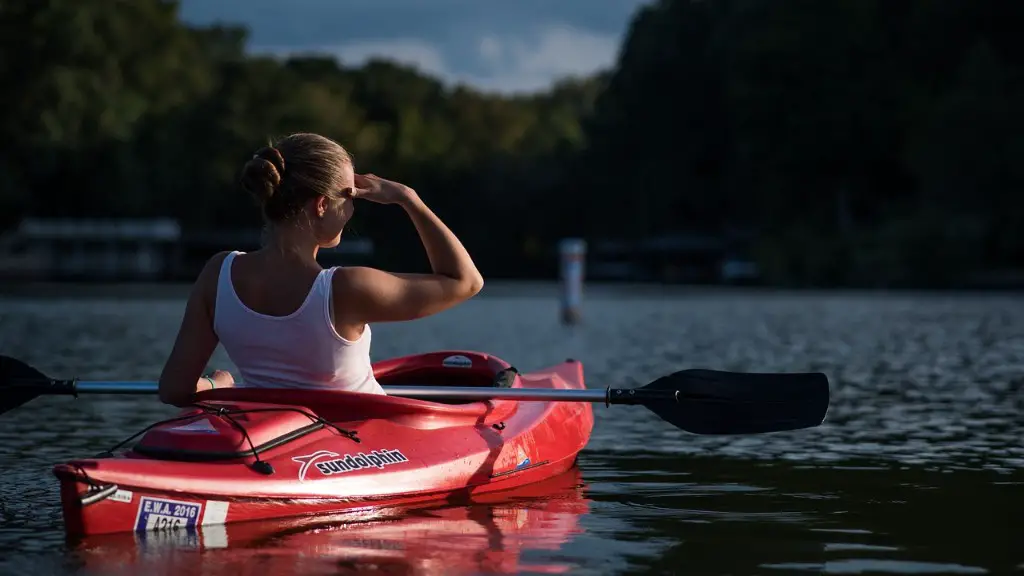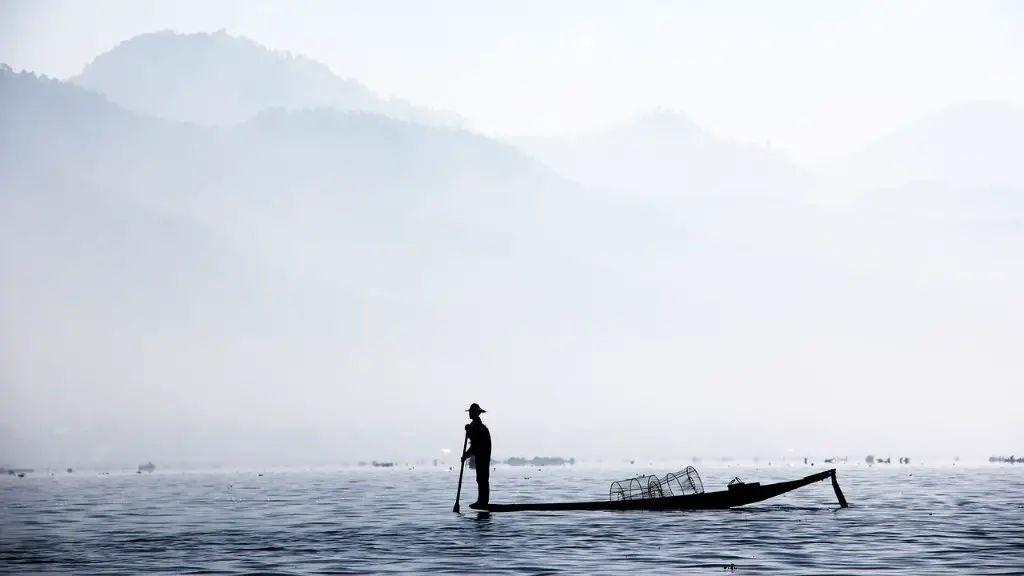Understanding the Basics
Shore fishing on Lake Superior can be an incredibly exciting and rewarding experience. Many anglers have enjoyed the unique benefits that this massive body of water can provide. In order to maximize the success of your shore fishing trip, it is essential that you familiarize yourself with the basic fundamentals. This includes understanding lake topography and water depth, as well as the best times to fish and the available bait options.
Before heading out onto the lake, it is important to get familiar with the area. Research the lake bottom and identify potential drop offs, channels, and points of interest. These areas tend to be great spots for shore fishing because they offer a variety of environments, depths, and often times abundant populations of fish. It’s also helpful to understand the local weather and water conditions. Determine the best times of day to fish, as well as what types of bait will work best in different situations.
Lake Superior is known for its particularly diverse and large population of sport fish species. As a result, anglers should familiarize themselves with the various available species in the lake. This includes identifying their size range, preferred habitats, and specific bait preferences. Understanding the species’ unique characteristics and behaviors will help you develop the best possible strategies for catching them.
Choosing the Right Equipment
When it comes to shore fishing on Lake Superior, proper bait and tackle selection can make all the difference. As a general rule of thumb, it’s important to go with light or medium spinning combos since they offer the perfect combination of sensitivity and power. When it comes to bait, it’s essential to understand the local waters and fish species. Some popular options for Lake Superior include soft plastics, crankbaits, and jigging spoons.
In terms of terminal tackle, it’s important to choose the right line. A good quality braided line with a fluorocarbon leader is often recommended because it is both highly durable and sensitive. Additionally, it is important to select the right hooks, weights, and swivels to ensure you have the proper balance of weight and action necessary to attract fish. For added convenience, some anglers prefer the use of a rod holder to simplify the process.
Maximizing Your Fishing Success
When it comes to shore fishing, there are several strategies that can help increase your chances of success. It is always a good idea to start by casting towards points and drop offs, as they tend to attract large concentrations of game fish. Additionally, it helps to fish directly after a major weather system or wind change, as this often stirs up the water and can draw large amounts of baitfish to the surface.
When baitfish are present, target species such as pike, musky, bass, and walleye tend to follow and can be especially active during these feeding periods. Paying close attention to what type of bait is present in the area and modifying your presentation accordingly is often a good idea. Pay attention to any signs of baitfish on the surface, under the surface, and even on shores in the form of birds landing or dipping.
Finally, try to position yourself so that you can cast into the wind. This will provide added momentum for the bait and will often provide a better presentation. If possible, try to position yourself so that you can cast in multiple directions and cover a larger area.
Know the Rules and Regulations
It is always important to familiarize yourself with the rules and regulations that govern Lake Superior. In particular, you should be aware of limits and size requirements for a variety of species. Additionally, it’s important to understand when and where certain species may be off-limits. Taking the time to research these regulations will go a long way towards ensuring you are in compliance and maximizing the safety and success of your trip.
Staying Safe on the Water
Shore fishing on Lake Superior can be both a rewarding and dangerous experience. It is important to be aware of the potential hazards that come with fishing on a large body of water. These include undertows, large waves, and extreme weather changes. It is essential to always wear a personal flotation device and be sure to monitor the weather reports for potential storms or changes in conditions.
Having the proper safety equipment is also incredibly important. For example, a good quality VHF marine radio and signal flares can help ensure that you are able to contact the rescue services in case of an emergency. Additionally, always let someone know when you plan to head out and what time you plan to return. This can help in the event of an unexpected situation.
Storing and Handling Your Catch
When catching valuable species, it’s important to understand the proper steps to store and handle your catch. This includes knowing how to properly bleed, gut, and preserve the fish. Additionally, it’s important to know how and where to store your catch while you’re still out on the lake. This can help ensure that your catch will remain fresh and healthy until you’re ready to bring it home.
It’s also important to keep in mind that fishing on Lake Superior can be challenging, so it is essential to practice and stay persistent. Shore fishing can be a great way to explore the lake and get closer to nature. By making use of the tips and information listed here, you can maximize your time on the lake and enjoy a successful shore fishing experience.
The Gear You Need for Fishing Lake Superior
In order to prepare for shore fishing on Lake Superior, it is important to have the right kind of gear. You will need a good quality rod and reel combination, proper bait and tackle, and a variety of terminal tackle. In order to maximize your success, you’ll also want to make sure you have the right lures and lines. Additionally, you may want to invest in safety devices such as a personal flotation device and VHF marine radio.
The right clothes and shoes are also essential. It is important to wear layers to ensure you can adjust to changing weather conditions. Rain gear is also recommended, as well as waders. A good hat and sunglasses are also highly recommended to protect yourself from the sun’s rays while out on the lake. Lastly, make sure to bring along plenty of drinking water to stay hydrated.
Preparing Your Boat for Fishing Lake Superior
When preparing your boat for shore fishing on Lake Superior, there are several key components you should keep in mind. First and foremost, you should make sure the boat is in good condition, including the engine and hull. Additionally, it is important to ensure any safety equipment is up to date, such as life jackets, flares, and radios. A proper anchor is also essential to ensure your boat remains stationary while you fish.
You will also need the right supplies for your outing. This includes the usual fishing tackle, as well as food and drinks for the day. Additionally, you should bring along a small first-aid kit, as well as cooler for storing your catch. Lastly, it is important to make sure you have the necessary navigation equipment on board, such as depth finders, compasses, and GPS.
When heading to shore fishing on Lake Superior, it is important to have the proper navigational equipment. This includes an up-to-date nautical chart, a reliable marine radio, a compass, and a GPS. Having these pieces of equipment on board can help you stay on course and maximize your time on the lake by avoiding areas with rocks, shallows, and strong currents. Additionally, it’s important to know how to properly read buoys, markers, and channel edges so that you can get to the right spot without any problems.
It’s also important to know how to properly move around the lake, including knowing when and how to dock your boat. Having a good idea of the sea conditions, navigation routes, and speed limits will ensure that you remain safe and efficient during your time on the lake. Knowing the important signs, such as no wake zones and caution areas, can also help you remain in compliance with the local laws.
Cleaning and Storing Your Equipment
After a successful day out on the lake, it is essential to properly clean and store your equipment. This includes cleaning rods, reels, and tackle, as well as storing any caught fish. It is important to rinse off all fishing gear, as well as any other equipment used on the lake. This helps to ensure that all of your supplies remain in the best condition and can help extend the life of your gear.
Additionally, it is important to properly store your catch. This includes proper handling and cleaning methods, as well as how to store the fish while on the lake. If you plan on eating the catch, properly cleaning, filleting, and storing the fish help to ensure the best quality taste and texture. A good quality cooler with plenty of ice is essential for keeping any necessary catches fresh until you’re ready to head home.





